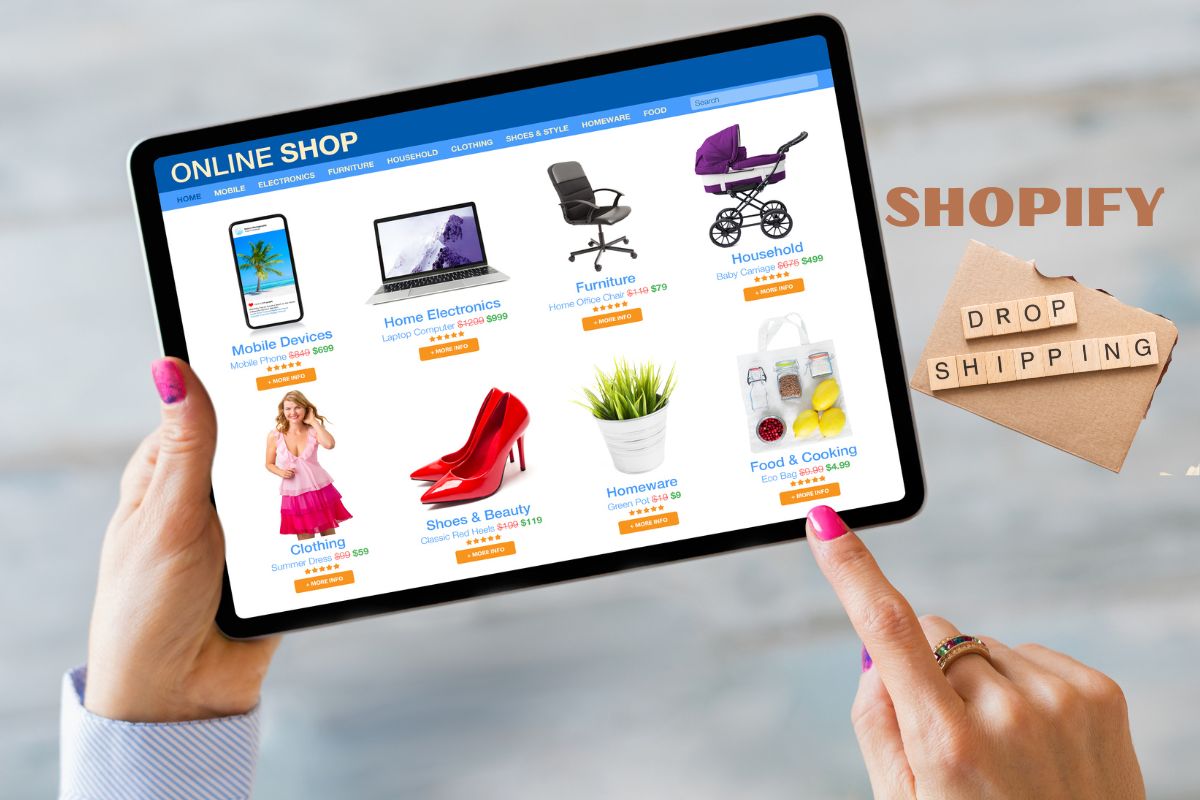Starting a small clothing business from home offers a unique opportunity to turn your passion for fashion into a profitable venture. With the convenience of the internet, launching an online storefront can be less intimidating than traditional brick-and-mortar operations. To begin, you’ll need to define your brand and identify the niche market you wish to serve. An understanding of your target audience will guide your decisions from design to marketing, ensuring that your creations resonate with the right customers.
Setting up your workspace is crucial for maintaining organization and productivity. Your home-based setup should include designated areas for your inventory, a space for fulfilling orders, and the necessary equipment for garment creation if you’re producing designs in-house. Additionally, selecting the right materials and establishing reliable suppliers is a foundation for consistent quality.
Securing an online presence is the next step. Creating a user-friendly website where customers can browse and purchase your products is essential. It’s also important to leverage social media platforms to showcase your clothing, engage with your audience, and build brand awareness. Through strategic planning, diligent work, and seamless online integration, your home-based clothing business can grow from a concept into a thriving brand.
Creating Your Business Plan
When starting a small clothing business from home, crafting a detailed business plan is critical. This roadmap will guide you through market analysis, niche selection, goal setting, and financial forecasting to ensure a profitable venture.
Market Research
Before you launch your home-based clothing business, thoroughly investigate the current market. Begin by identifying your target audience and understanding their preferences. You should analyze competitors to evaluate their strengths and weaknesses and identify gaps your business can fill. This step is crucial to determine the feasibility of your business and to pinpoint your unique selling proposition.
Defining Your Niche
Selecting a niche is vital for setting your brand apart. What specific segment of the clothing market will your business focus on? It could be anything from eco-friendly materials to plus-size fashion or handmade children’s clothing. Defining your niche helps to attract a dedicated customer base and shapes the identity of your line.
Setting Business Goals
Establish clear, measurable goals for your clothing business. Your objectives may include desired sales targets, a specific profit margin, or expansion plans. Goals should be Specific, Measurable, Achievable, Relevant, and Time-bound (SMART). They give you a destination and help you to map out the tactical steps to get there.
Financial Planning
An essential component of your clothing line business plan is financial planning. Start by outlining the initial funding you’ll need – this includes costs for materials, equipment, marketing, and any other start-up costs. Create projections for your revenue and expenses, and calculate the break-even point. Be realistic about your profit margins and consider different scenarios that could impact your business’s profitability.
Choosing Your Business Model

When starting a small clothing business from home, selecting a business model that aligns with your goals, budget, and operational capabilities is crucial. This decision will determine how your products are created, managed, and delivered to your customers.
Manufacturing Options
You have the option to work with manufacturers to produce your clothing line. This could involve partnering with local craftsmen or overseas factories. When dealing with manufacturers, you’ll have to consider minimum order quantities (MOQ) and the costs associated with producing your designs. Keep in mind that your choice affects both the quality of your merchandise and your brand’s reputation.
- Local Manufacturers: Provides more control over production and quality; however, it might entail higher costs.
- Overseas Manufacturers: Often offers competitive pricing but comes with longer lead times and potential communication barriers.
Dropshipping and Print-on-Demand
Dropshipping and print-on-demand services are modern ecommerce models that allow you to sell clothing without holding inventory. Dropshipping involves selling a third-party’s stock, where the supplier fulfills orders on your behalf. Print-on-demand lets you offer customizable designs that are printed when ordered, reducing waste and upfront costs.
- Dropshipping Advantages: Low startup costs and you don’t need to manage inventory.
- Print-on-Demand Advantages: Offers a way to sell custom designs without the risk of unsold stock.
Stock and Inventory Management
Effective inventory management is key in the clothing business to avoid overstocking or stockouts. If you choose to hold inventory, whether it’s wholesale clothing or your own designs, you’ll need a system to track your stock levels, sales, and deliveries. A strategic approach to inventory will improve your cash flow and customer satisfaction.
- Inventory Software: Use to automate stock level tracking and reorder points.
- Physical Storage Solutions: Consider if managing inventory at home is feasible or if you’ll require additional storage space.
Each business model comes with its own set of challenges and benefits. Your choice should be influenced by your brand’s unique needs and resources.
Legal Considerations

Before embarking on your journey to start a home-based clothing business, understanding the legalities is crucial. You must navigate through business registration and securing the necessary permits and licenses to operate within the bounds of the law, protecting both yourself and your business.
Registering Your Business
To legitimize your clothing business, you must register your entity. If you opt for a Limited Liability Company (LLC), this will protect your personal assets from business liabilities and may provide tax benefits. The process involves selecting a unique business name, filing articles of organization with your state, and paying the required fee. Check with your state’s Secretary of State office or equivalent for the exact requirements.
- Checklist for LLC Registration:
- Select a business name that complies with your state’s rules.
- File the articles of organization.
- Pay the filing fee.
- Create an operating agreement.
Acquiring Permits and Licenses
Your clothing business will require specific permits and licenses, which vary by location, business type, and the products you offer. Generally, you will need a business license to operate. If you plan to manufacture clothing, additional permits related to health, safety, and environmental regulations may be necessary. Check with your local government and the U.S. Small Business Administration (SBA) for a list of required permits and licenses.
- Common Permits and Licenses:
- Business operation license
- Seller’s permit (for sales tax collection)
- Health and safety permits (if manufacturing)
- Zoning and land use permits (for home-based businesses)
By adhering to these legal requirements, you set a solid foundation for your clothing business, ensuring compliance and avoiding potential legal hurdles.
Crafting Your Brand

Crafting your brand is a fundamental step in establishing your small clothing business from home. Your brand is your promise to your customer—it embodies your identity, values, and the unique style of your clothing line.
Designing Your Logo and Brand Identity
Your logo and brand identity are vital elements that visually communicate the essence of your clothing brand to consumers. Consider employing design elements that reflect the fashion industry’s trends yet are timeless enough to stand out. When designing your logo, aim for simplicity and memorability. This helps ensure that your brand is easily recognizable, which is crucial for promoting and sustaining your business’s growth.
Developing a Brand Name
Choosing a brand name is a critical decision that will impact your business for years to come. It should reflect the personality of your brand, be easy to spell and remember, and resonate with your target market. Research names within the fashion industry to avoid repetition and ensure the name isn’t already trademarked. Tools like trademark databases and domain availability checks are invaluable in this process.
Understanding Your Target Market
To thrive in the fashion industry, it’s imperative to have a deep understanding of your target market. Begin with demographic research, such as age, gender, and purchasing preferences. Then, consider the psychographics, which involve attitudes, aspirations, and other psychological criteria. Together, these insights will inform all aspects of your branding strategy, ensuring that your logo, identity, and name connect with the right audience.
Setting Up Your Online Presence

Starting a small clothing business from home requires not just passion for fashion but also strategic planning, particularly when it comes to establishing your online presence. A well-thought-out digital footprint can mean the difference between obscurity and success.
Building Your E-commerce Platform
Your online store is your digital storefront. Choose an e-commerce platform like Shopify, Wix Ecommerce, or Etsy to set up your shop with minimal hassle. For a wider reach, platforms like Amazon and eBay might also be considered. Ensure the website design is visually appealing and user-friendly, showcasing your products with high-quality images and detailed descriptions. Payment processing setup and security are also critical—customers should find it easy to navigate and safe to use your site.
Establishing Social Media Presence
Social media accounts are vital for connecting with customers and building your brand identity. Platforms like Instagram, Facebook, and Pinterest are ideal for a clothing business due to their visual nature. Establishing a social media presence means being consistent with your branding across these channels. Interact with your audience regularly to build a loyal following.
Creating Engaging Content
Engagement is key in the digital space. Create content for your e-commerce website and social media that resonates with your target audience. This can include styling tips, behind-the-scenes looks, or exclusive sneak peeks on a blog section of your site. High-quality photos, videos, and well-crafted stories about your collection can stimulate interest and encourage sharing, which ultimately drives traffic to your online store.
Product Development and Sourcing

When starting your own clothing business from home, the heart of your venture lies in creating unique products and establishing a reliable supply chain. Your focus will be on designing your clothing line, sourcing high-quality fabrics and materials, and partnering with reputable manufacturers.
Designing Your Clothing Line
Begin by sketching your designs, considering not just aesthetics but also functionality and market trends. Your clothing line should reflect a cohesive style that speaks to your target audience. Detailed designs will aid communication with manufacturers and ensure that your vision is accurately brought to life. For inspiration, observe the emerging nation perspective on product development in small-medium enterprises.
Sourcing Fabrics and Materials
You will need to identify suppliers who can provide high-quality fabrics that meet your design requirements. Prioritize materials that align with the ethos of your brand, whether that’s luxury, sustainability, or affordability. Fabric selection is pivotal as it influences the comfort, look, and durability of your finished pieces. Some businesses maintain a small supply of fabric in-house, ensuring they can respond quickly to demand.
- Fabric Suppliers: Research local and international suppliers.
- Local Suppliers: Offer the benefit of reduced shipping costs and times.
- International Suppliers: May provide a wider variety of materials.
Finding Reputable Manufacturers
The final step in product development is selecting a manufacturing partner. Look for clothing manufacturers that are experienced in your niche market and have a track record of quality craftsmanship. They should be open to collaborating on small orders, as many home-based businesses start with limited production runs. Manufacturers’ capabilities in fashion remanufacturing can also be an advantage, adding a layer of sustainability to your brand.
- Considerations for Manufacturers:
- Quality Control: Ensure they have strict quality assurance processes.
- Communication: They must understand your designs and provide clear feedback.
- Scalability: The manufacturer should be able to grow with your business.
Marketing and Sales Strategy

To establish a successful home-based clothing business, you must meticulously plan your marketing and sales strategy. This should involve a robust marketing plan, competitive pricing strategies, and the strategic use of influencers and paid advertisements to increase your brand’s reach and sales.
Developing a Marketing Plan
Your marketing plan is a comprehensive blueprint that outlines how you aim to penetrate the market. Begin by identifying your target audience and designing marketing campaigns that resonate with them. Define your unique selling proposition (USP) and leverage it across all your marketing materials. Allocate a marketing budget that reflects your goals but is realistic given your financial constraints. Use various channels such as social media marketing, email marketing, and content marketing to amplify your brand’s message.
Setting Pricing Strategies
To determine your pricing, analyze both cost and perceived value to arrive at a competitive price point that ensures profitability. Consider material and production costs, as well as market standards. Articulate why your offerings are worth their price, be it through unique designs, superior quality, or exclusive accessories. Promotions and discounts can be strategic, but should not undercut the value of your brand.
Utilizing Influencers and Paid Ads
Maximize reach and credibility by partnering with influencers in the fashion niche. Their endorsement can bolster brand awareness and trust among potential customers. Use paid ads on platforms where your audience is most active, and ensure the content is engaging and tailored to the platform’s format. Allocate funds judiciously between influencers and paid advertising to maximize your sales while keeping within your marketing spend. Continuously analyze the performance of these collaborations to optimize future campaigns.
Customer Engagement and Service

In a small clothing business started from home, your success is tightly linked to how well you can engage with your customers and provide exceptional service. This involves two key aspects: delivering continuous high-quality customer service and systematically collecting customer feedback.
Providing Excellent Customer Service
Be Accessible: Ensure that your customers can easily contact you through multiple channels such as email, social media, and a dedicated phone line. Respond promptly to inquiries and concerns to build trust and demonstrate your commitment to their satisfaction.
Personalize Interactions: Get to know your customers by name and remember their preferences. Personal touches can make a significant impact, differentiating your small business from larger competitors.
- Order Fulfillment: Take extra care when packaging orders. Neat, secure, and attractive packaging shows professionalism and respect for the customer’s purchase.
- Handling Complaints: Address complaints swiftly and with a clear resolution pathway. Follow up to ensure the solution was satisfactory.
Collecting Customer Feedback
Surveys and Questionnaires: Regularly conduct short surveys or questionnaires to gauge customer satisfaction. Use platforms such as Google Forms or SurveyMonkey to streamline the process.
Social Media and Online Reviews:
- Encourage customers to leave reviews on social media or business review platforms.
- Monitor these platforms and respond to both positive and negative feedback to show engagement.
By focusing on these areas, you’ll not only improve your service but also foster a loyal customer base that feels valued and heard.
Managing Finances

Managing your finances is crucial when starting a small clothing business from home. You’ll need to understand the relationship between costs, pricing, profits, and how to keep your financials in order, starting with a dedicated business bank account.
Understanding COGS and Overhead
Your Cost of Goods Sold (COGS) is the sum total of the expenses that go directly into producing the clothes you sell—this includes materials and labor. It’s vital to know your COGS to measure your business’s efficiency and profitability. On the other hand, overhead costs are the ongoing expenses that are not directly tied to production, such as utilities, rent for your workspace if applicable, and marketing. A clear distinction between these costs is essential for accurate financial tracking and analysis.
- COGS: Fabric, threads, labor
- Overhead: Utilities, rent, equipment maintenance
Effective Pricing Strategy
To set prices that cover costs and yield profits, employ a pricing strategy that accounts for both the COGS and overhead costs while keeping the quality of your products in mind. Your price points should reflect the value of your clothing and enable you to compete in the market. Here’s a straightforward formula:
- Selling Price = COGS + Overhead + Profit Margin
Ensure your profits are built into the pricing strategy. This isn’t just what’s left after costs – it’s a deliberate addition to ensure business growth.
Opening a Business Bank Account
It’s a fundamental step to open a business bank account to effectively manage your business’s finances. This separates your personal finances from your business transactions, providing clear insights into your financial position. With a business account, tracking expenses, filing taxes, and monitoring profits becomes more straightforward. It’s a key tool in professionalizing your operations and building financial credibility.
- For Price Management: Monitor account for cash flow analysis
- For Quality Checks: Ensure funds are allocated for quality control
Keep these tips in focus, and you’ll set a strong financial foundation for your home-based clothing business.
Frequently Asked Questions
Starting a small clothing business from home includes managing initial costs, selecting online platforms, and understanding the legalities. Here are answers to common questions on getting started.
What are the initial costs for launching a small clothing business?
Initial costs can range from purchasing materials and equipment to setting up your workspace. Expect to invest in fabric, sewing machines, and possibly software for design and bookkeeping.
Which platforms are best for starting an online clothing store from home?
Platforms like Etsy, Shopify, and WooCommerce are popular for home-based clothing businesses due to their user-friendly interfaces and scalable features.
What steps should I take to start selling my own clothing line without initial investment?
Consider dropshipping, where you design clothing that a third-party prints and ships for you, or utilize print-on-demand services to avoid upfront inventory costs.
How do I find reliable wholesale suppliers for a home-based clothing business?
Research and seek recommendations for wholesale suppliers who offer quality materials at competitive prices. Trade shows and online wholesale directories can be good starting points.
Can I successfully run a clothing business from home with no prior experience?
Yes, with dedication to learning the business side of fashion and continuous skill development in areas like design, marketing, and sales, you can run a successful home-based clothing business.
What are the legal considerations when setting up a home-based clothing business?
Register your business, understand tax obligations, and ensure compliance with local zoning laws. You may also need to consider trademarks and business licenses specific to your location and business model.



